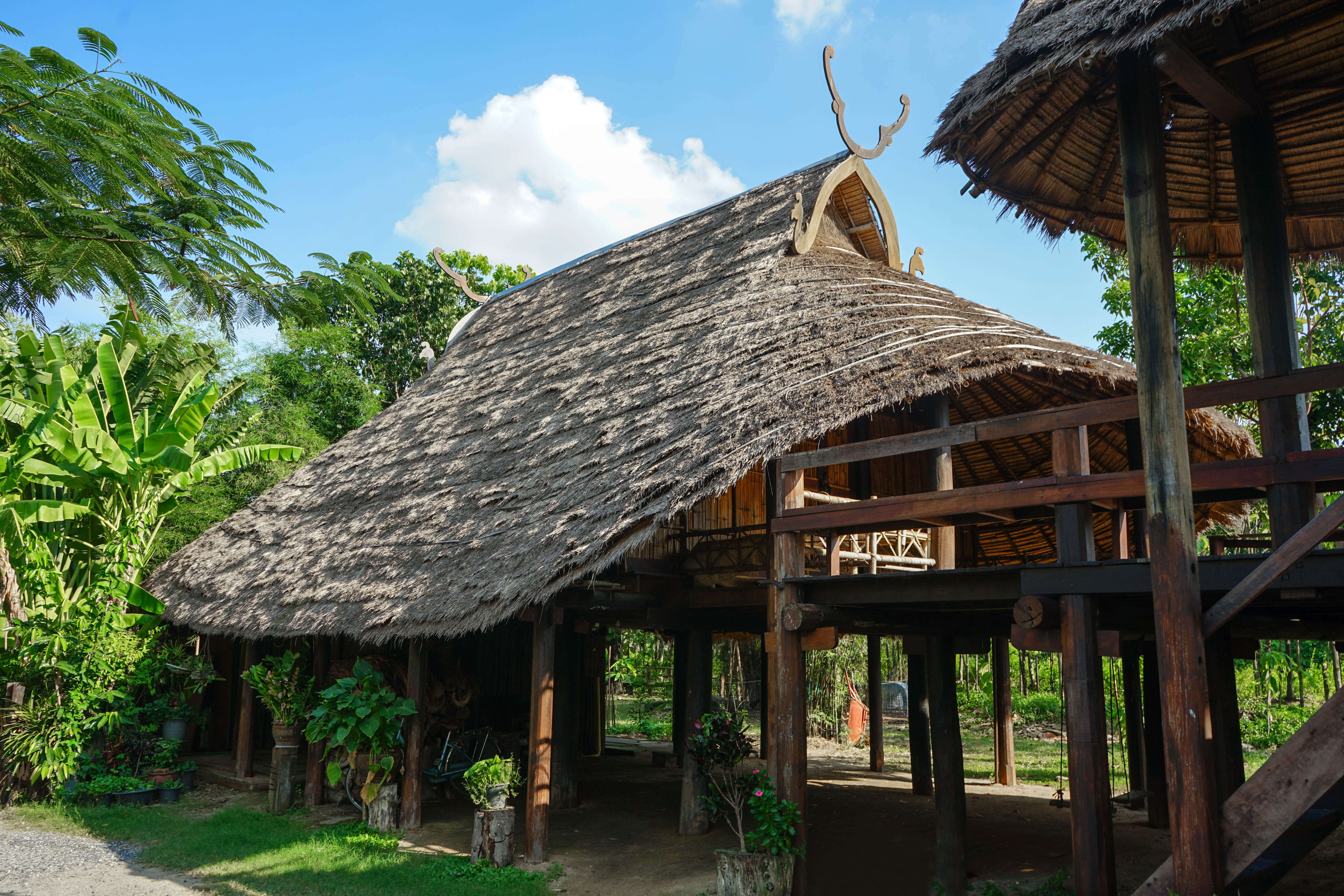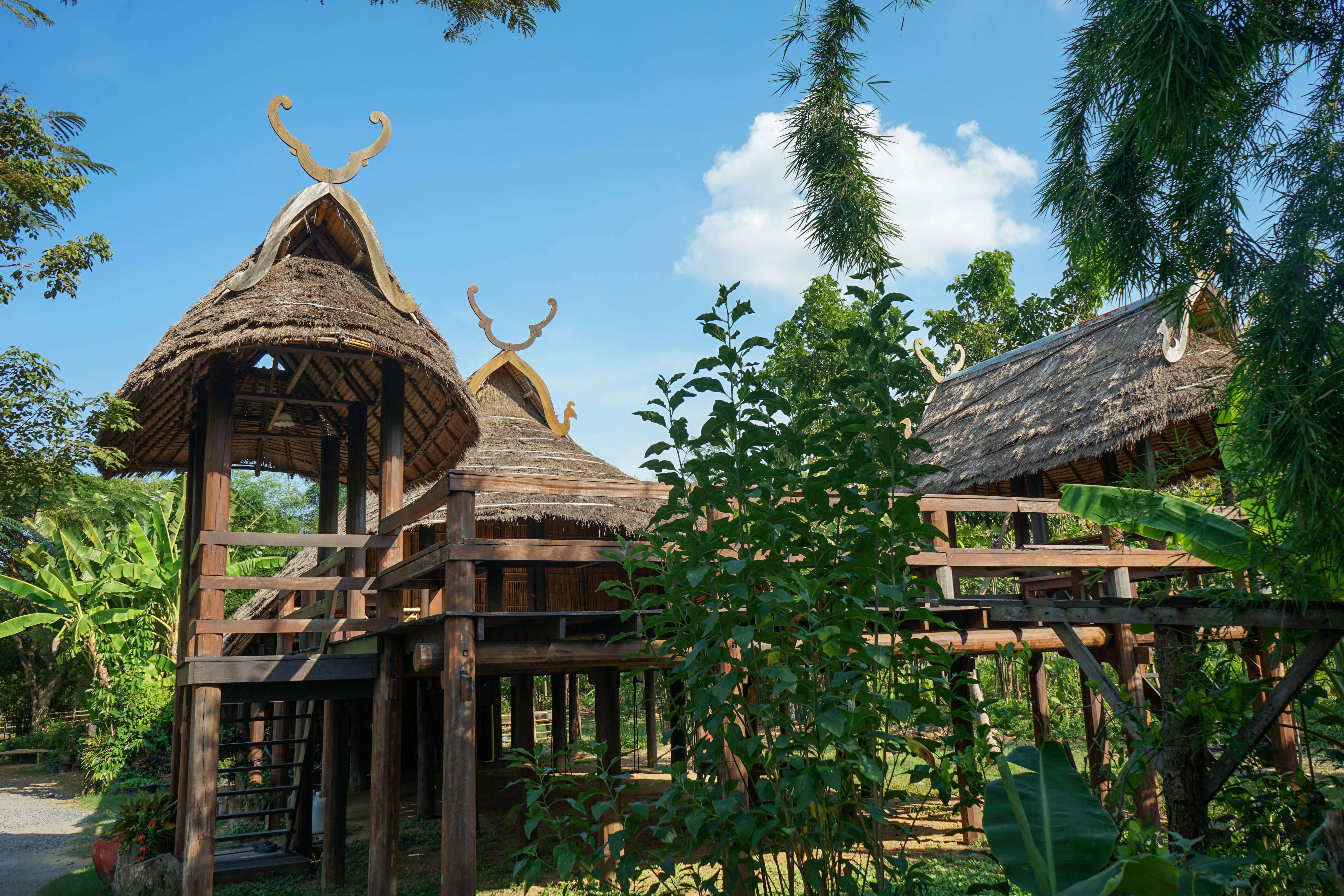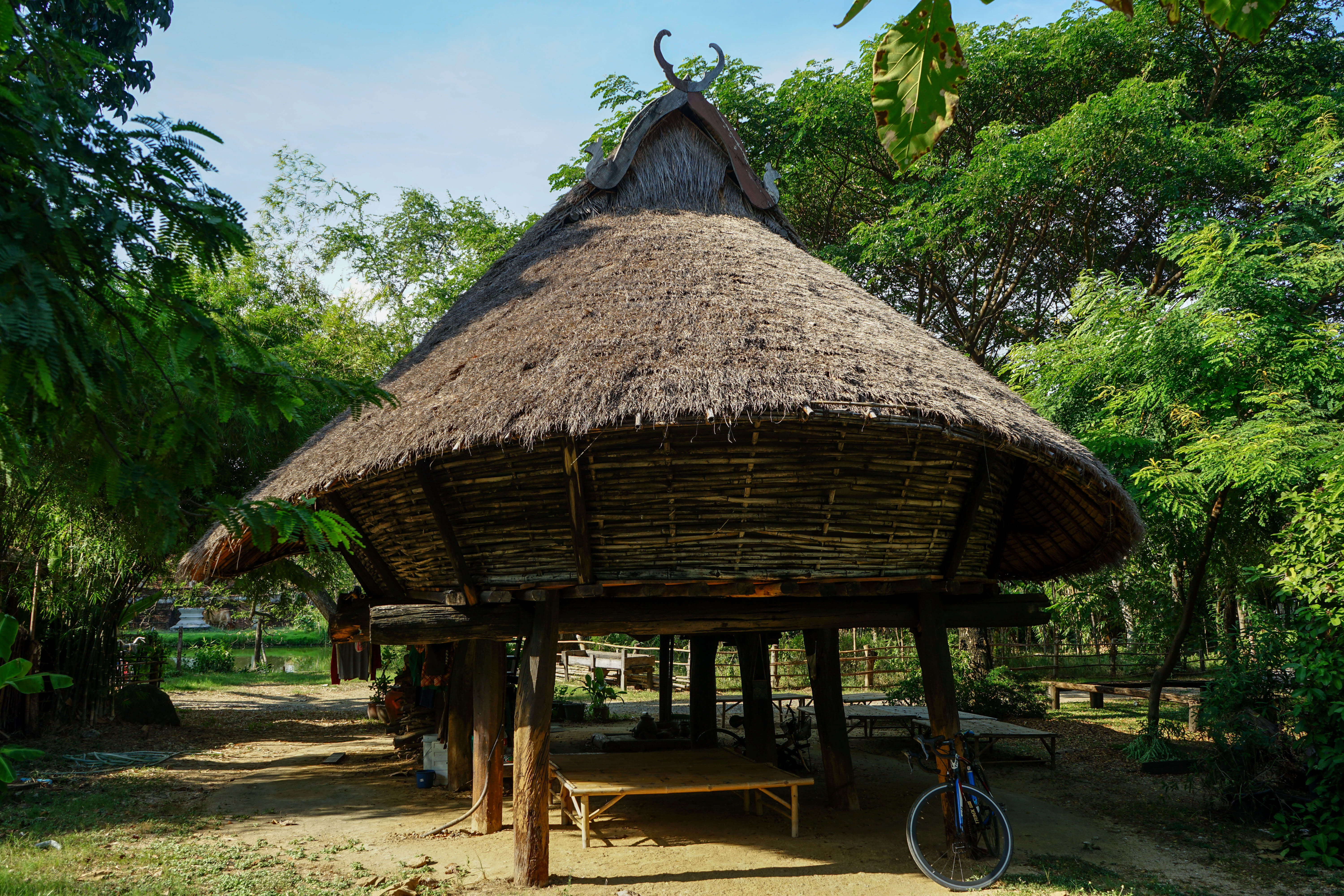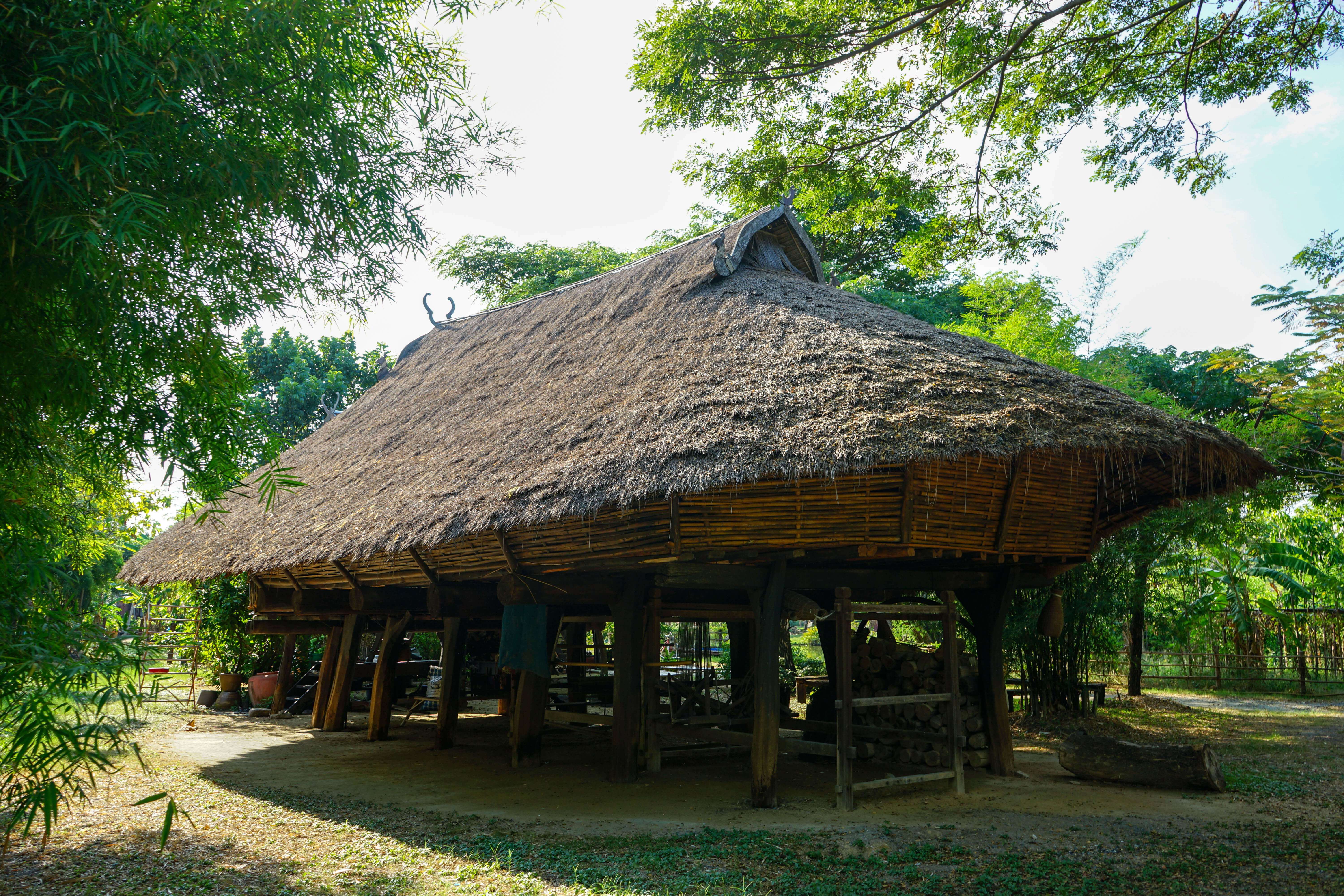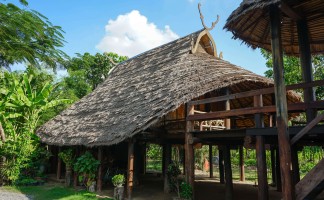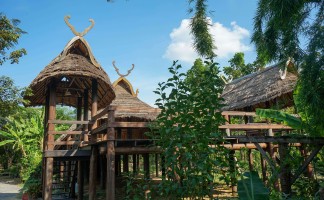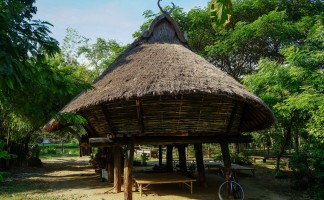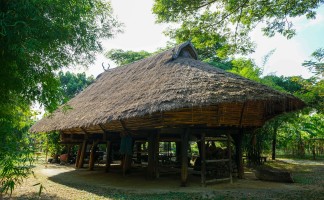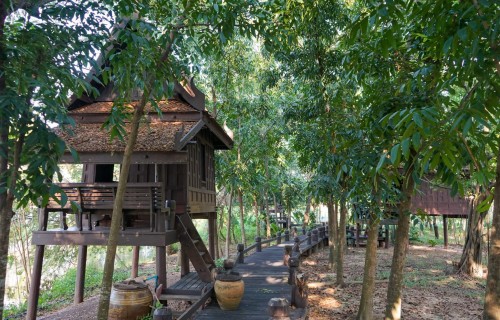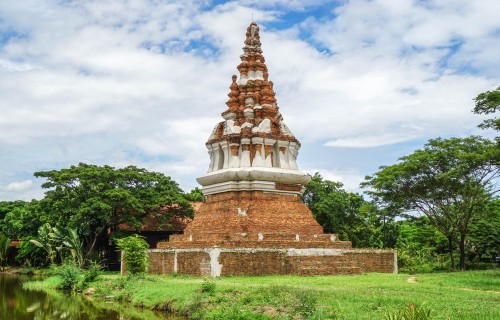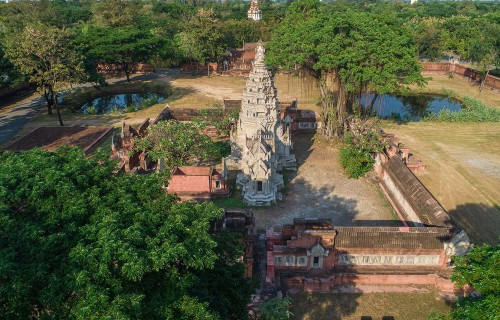The Thai-Songdam Village (84)
- Information
The Lao Song is another group of Tai people which are sometimes called by the different names such as Tai Songdam and Phu Tai. There are a lot of Song villagers living in Phetchaburi and Suphan Buri at present. These people came from their homes in the northern region of Laos which stands adjacent to the boundary of Vietnam. During the early Rattanakosin era, Tai Lao Song came to live in Siam and became Siamese citizens. During that time, they lived at Khao Yoi District in Phetchaburi and then moved to Suphan Buri Province.
Although Buddhism is their principle religion, they still hold firmly to their animism beliefs; the Lao Song still pay great respect to the house and ancestral spirits. The evidence of this living tradition can be seen from the dress they put on when a ritual ceremony, Sen Ruan, is held to make offerings to the spirits.
Lao Song people prefer to live in a clear and clean environment, dislike humid, damp and muddy areas. Although Lao Song are agriculturalists themselves and carry out rice farming in lowland areas, they prefer to live in highlands where floods are rare. Moreover, they love to have a yard in front of the house so they can enjoy their activities during the daytime.
The unique characteristic of Lao Song custom can be seen from their traditional houses. The original dwellings of Lao Song were acquired from the village of Lao Song in Sa Yai Som, Suphan Buri Province. Pillars and beams of the structure are made of wood. Used to help support the beams, the wooden pillars are forked so they can fit into the beams. The floor and the walls, however, are built of bamboo. The house is roofed with long grass tied together by vine or rattan (calamus). The whole structure is secured together without using a single nail.
Lao Song dwellings are normally divided into three parts. The frontal part reached by a staircase serves as a small living room and is separated from the central part by a large wall. The area in the central part is used as a kitchen and sleeping quarters while the back part serves as a sacred area where the residents will hold rituals to pay respect to their house spirits. According to their tradition, strangers or guests will not be allowed to enter their homes unless the homeowner has asked for permission from the spirits beforehand.
Although Buddhism is their principle religion, they still hold firmly to their animism beliefs; the Lao Song still pay great respect to the house and ancestral spirits. The evidence of this living tradition can be seen from the dress they put on when a ritual ceremony, Sen Ruan, is held to make offerings to the spirits.
Lao Song people prefer to live in a clear and clean environment, dislike humid, damp and muddy areas. Although Lao Song are agriculturalists themselves and carry out rice farming in lowland areas, they prefer to live in highlands where floods are rare. Moreover, they love to have a yard in front of the house so they can enjoy their activities during the daytime.
The unique characteristic of Lao Song custom can be seen from their traditional houses. The original dwellings of Lao Song were acquired from the village of Lao Song in Sa Yai Som, Suphan Buri Province. Pillars and beams of the structure are made of wood. Used to help support the beams, the wooden pillars are forked so they can fit into the beams. The floor and the walls, however, are built of bamboo. The house is roofed with long grass tied together by vine or rattan (calamus). The whole structure is secured together without using a single nail.
Lao Song dwellings are normally divided into three parts. The frontal part reached by a staircase serves as a small living room and is separated from the central part by a large wall. The area in the central part is used as a kitchen and sleeping quarters while the back part serves as a sacred area where the residents will hold rituals to pay respect to their house spirits. According to their tradition, strangers or guests will not be allowed to enter their homes unless the homeowner has asked for permission from the spirits beforehand.
